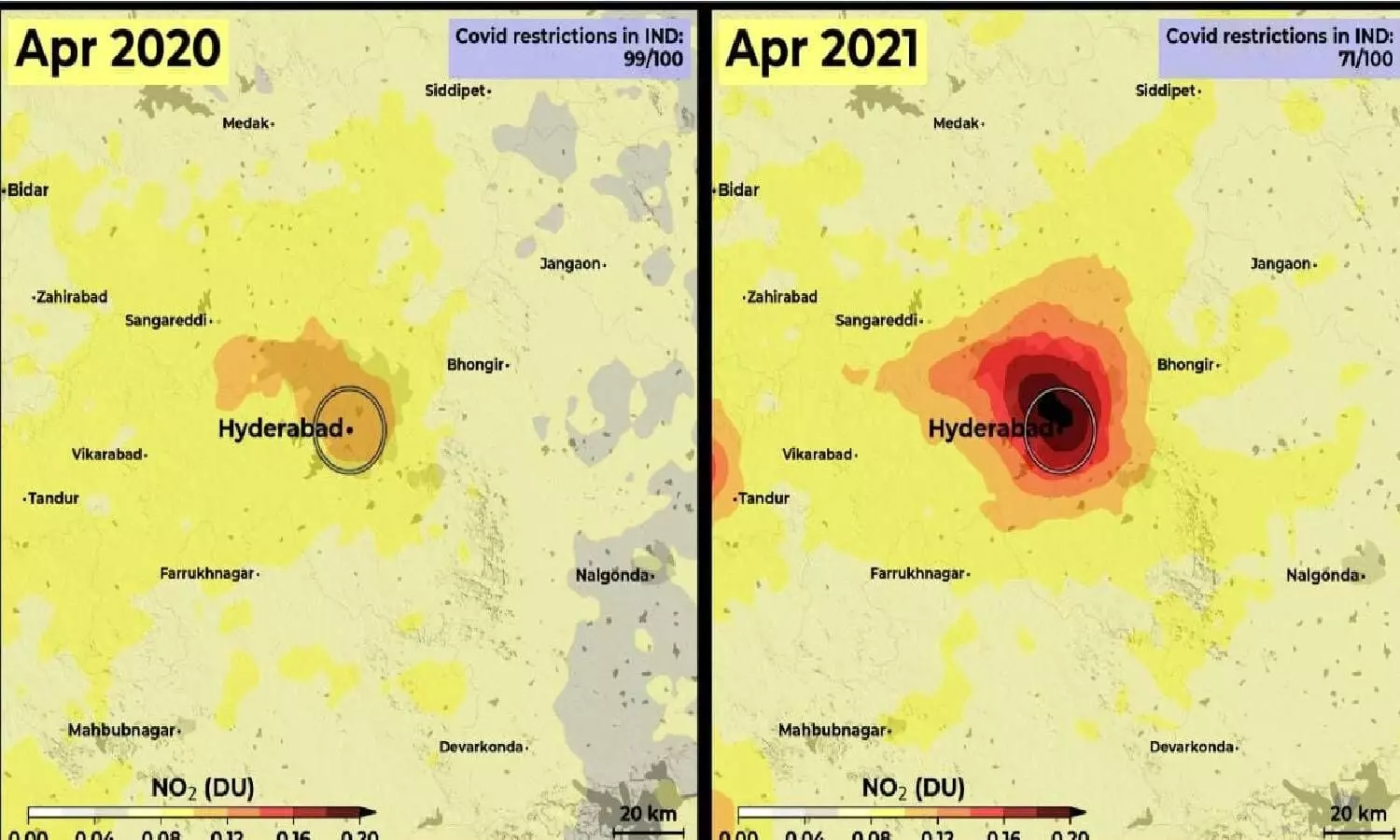NO2 pollution level in Hyderabad increases by 69% in April: Report
A new Greenpeace India report has revealed that NO2 (nitrogen dioxide) pollution in Hyderabad increased by 69 percent between April 2020 and April 2021.
By Sumit Jha
Hyderabad: A new Greenpeace India report has revealed that NO2 (nitrogen dioxide) pollution in Hyderabad increased by 69 percent between April 2020 and April 2021.
Greenpeace said as the pandemic continues to have a severe impact in India and cases are spiking in other countries, there is growing evidence that polluted cities suffer disproportionately.
In Hyderabad, NO2 air pollution was 69 percent higher in April 2021 compared to the corresponding period last year.. Part of this difference is attributable to changing weather conditions. After removing the effect of weather, there is still an increase of 38 percent which is attributed to an increase in emissions. The weather had only little contribution to this change.
NO2 is a dangerous air pollutant that is released when fuel is burned, as in most motor vehicles, power generation, and industrial processes. Exposure to NO2 can severely impact people's health at all ages, including the respiratory and circulatory systems and the brain, leading to increases in hospital admissions and mortality.
Pollution has increased in all eight most populous state capitals in the country. Among Mumbai, Delhi, Bengaluru, Hyderabad, Chennai, Kolkata, Jaipur and Lucknow, Delhi saw the most dramatic increase between April 2020 and April 2021.
According to satellite observations, NO2 pollution in Delhi was higher by 125 percent, Chennai by 94 percent, Mumbai by 52 percent, Bengaluru by 90 percent, Kolkata by 11 percent, Jaipur by 47 percent and Lucknow by 32 percent in April 2021 compared to the corresponding period last year.
The health impact of fossil-fuel related air pollution is severe and has been reflected time and again in several reports. Yet there has been little change to reliance on fossil fuels, including coal, oil and gas, increased economic activity is still largely coupled to toxic air pollution in most of the cities.
"The air quality levels in these cities are alarming. The cities and the people are already paying a huge price for our reliance on burning fossil fuels, this business as usual cannot continue. People saw clean skies and breathed fresh air during the nationwide lockdown though it was an unintended consequence of the pandemic. The disruption caused by the pandemic is a case to transition to cleaner, equitable and sustainable decentralized energy sources such as rooftop solar, and clean and sustainable mobility must be central to recovery efforts across cities. The recovery from the pandemic must not come at the expense of a return to previous levels of air pollution," said Avinash Chanchal, Senior Climate Campaigner, Greenpeace India.
He said motor vehicles and industries based on fossil fuel consumption are the major drivers of NO2 pollution in Indian cities. "The governments, local administration and city planners must initiate the transition from privately owned vehicles to an efficient, clean, and safe public transport system that is run on clean energy that of course, must provide Covid-19 related safety measures," he said.